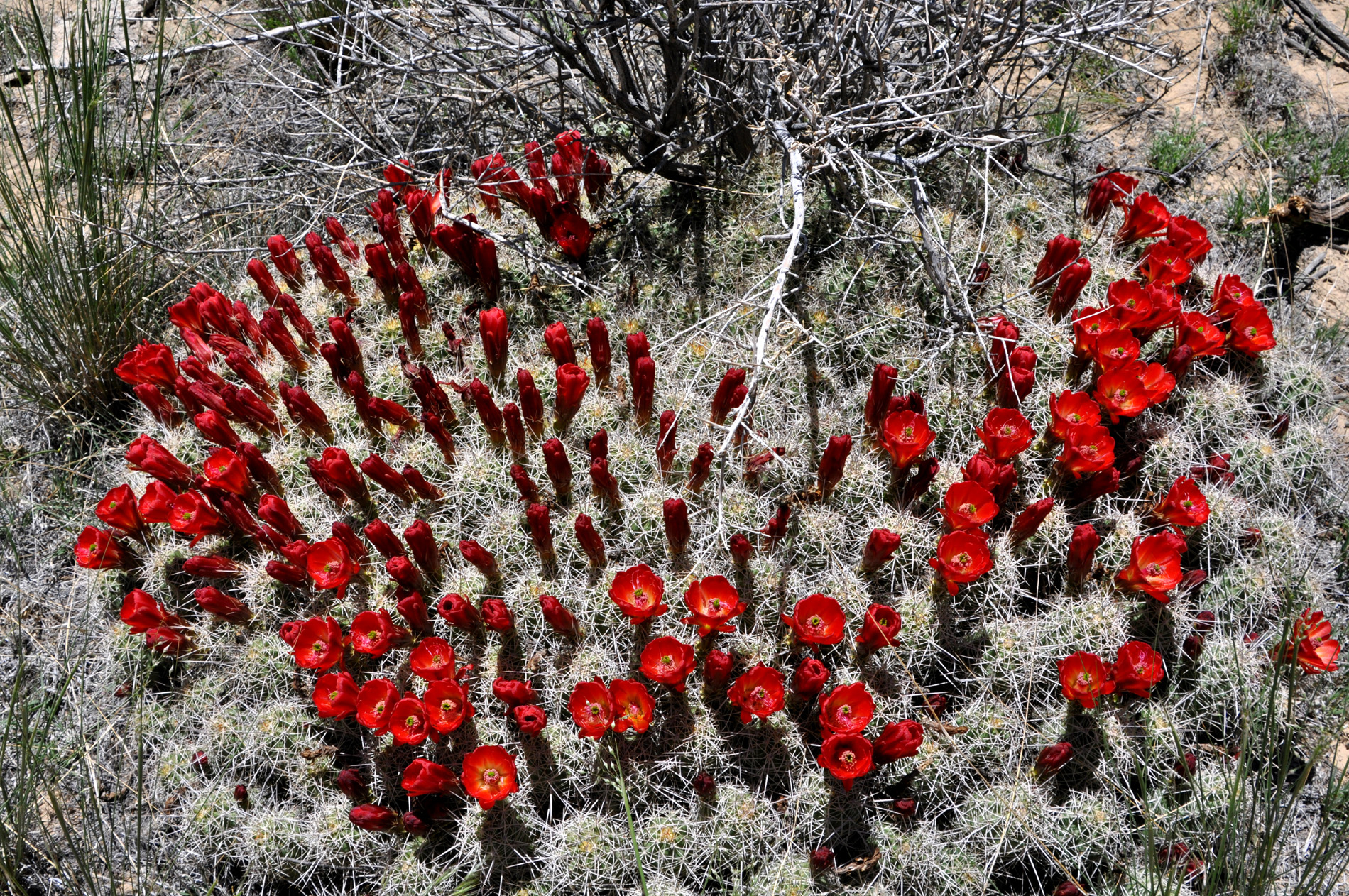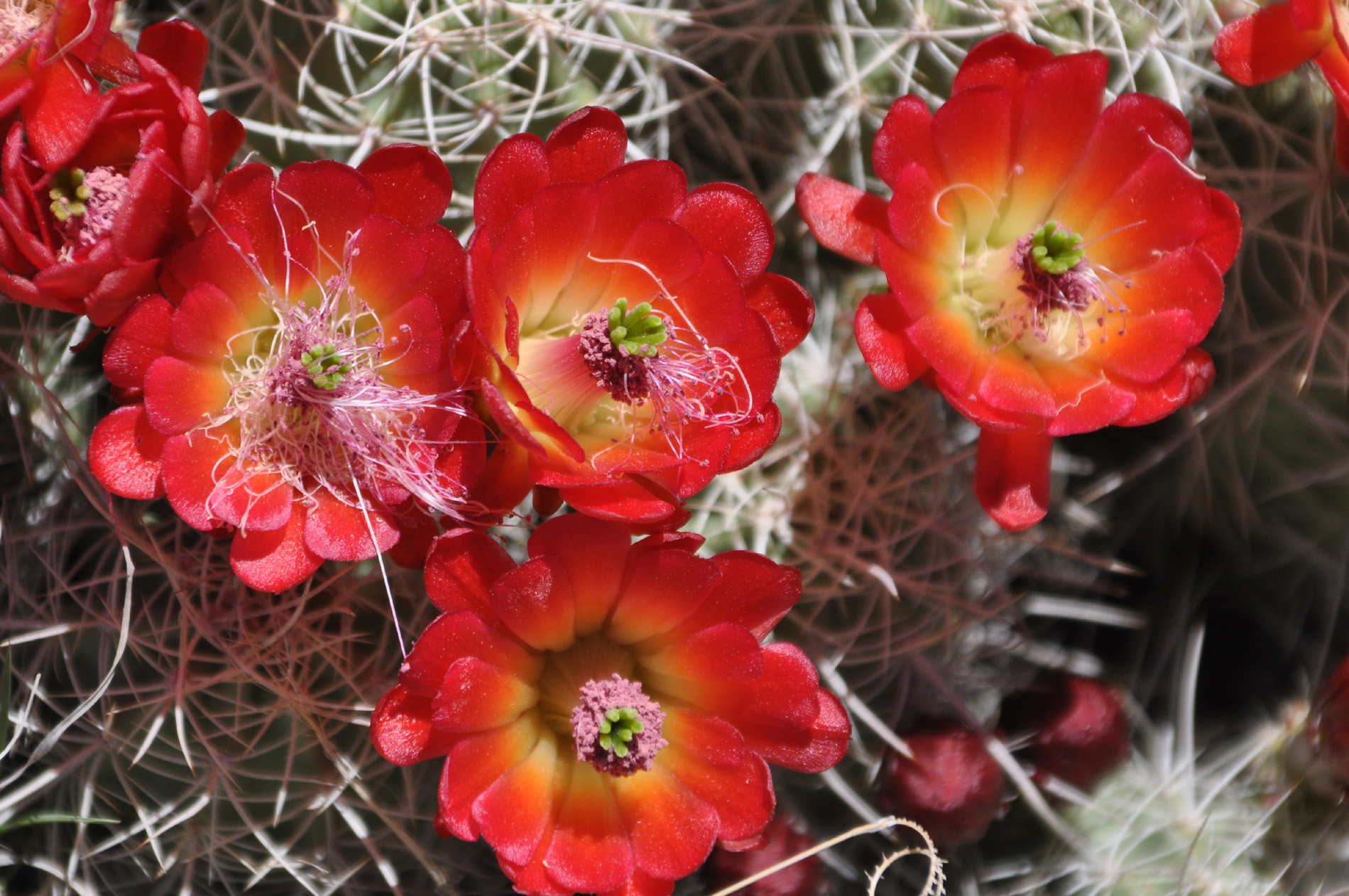Claret Cup Cactus Flowers
Echinocereus triglochidiatus, or Claret Cup Cactus, is one of the most beautiful of the cacti that grow in Utah when it sports flowers. These names refer to the plant's spiny resemblance to a hedgehog (or so the early Europeans thought) and the plant's shape, respectively. Triglochidialus means "three barbed bristles" and refers to the straight spines arranged in clusters of three. The Claret Cup is a small barrel-shaped cactus with a few to several hundred stems in a compact hemispheric clump or mound. The stems are mainly cylindrical, up to one foot long and one to two and one-half inches thick, and with nine or ten ribs. The central spines are straight or slightly curved and one to two inches long. Smaller radial spines arise from below the central spines at a sharp angle. Stems are green and contain chlorophyll. There are no leaves.
Flowers are scarlet red, with many petals, and are cup-shaped. The flowers are one to two inches long and grow below the stem's apex. Hummingbirds are the primary pollinators and must stick their entire head into the flower to reach the nectar chambers at the flower's base. In the process, the hummingbird's forehead gets dusted with pollen. (Sometimes they look like another species of hummingbird!) The fruits are red at maturity and are edible (remember to burn off the spines first!). Flowers bloom April through June, from low to higher elevations. This is the first cactus to bloom in the spring. The flowers stay open at night, unlike many other species of cacti whose flowers close in the evening. The flowers last three to five days.
 |
| This was taken in June of 2010 while on a trip to image pictographs in southern Utah. The location is called 'Head of Sinbad'. Below is another large cluster of flowers. |
 |
 |
| A closeup of the flowers to show the details more fully. |